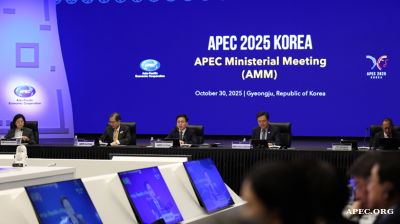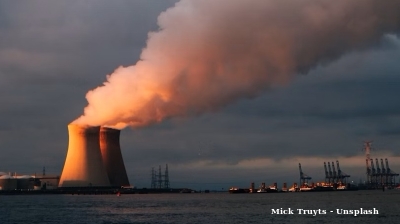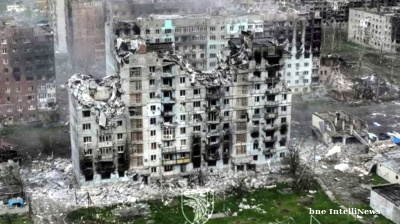Russian government, Central Bank to stamp on economic growth in a non-monetary effort to slow inflation

CBR governor Elvia Nabiullina has been through all the tools in her box in an attempt to curb Russia’s soaring inflation, but none of them are working. So together with the government, she is turning to non-monetary policy tools and is stamping on the most problematic parts of the economy to cool price growth by slowing growth.
The government and regulator have targeted three groups of borrowers who are insensitive to massive interest rate hikes and will curb their access to credit by administrative means to take the edge off inflation: state-owned companies, businesses receiving subsidies and the retail sector.
Prices typically rise when too much cash is chasing too few goods. One solution is to produce more goods, and Russian President Vladimir Putin told the government to do exactly that at a meeting with the top economic and financial officials at the start of this week.
“The fight against price increases must be primarily achieved by increasing the supply of goods and services so that their volume meets both consumer and investment demand,” Putin said in a meeting dedicated to return Russia’s growth to a more balanced path.
But that is not going to work. Thanks to a chronic labour shortage and already maxed out capacity utilisation at 81% there is simply little room left to expand production. The economy is already running red hot. Even if it were possible to hire a few more workers to produce more goods, increasingly the demand for more labour would only push nominal wages even higher, already up 12% year on year in July, which would feed even faster inflation.
The economy is overheating due to the massive spending on the war in Ukraine, currently 8% of GDP, and showed signs of accelerating again in July, expanding 0.7% month on month, seasonally adjusted, recovering from a 1.0% decline in June. On an annual basis, economic growth reached 3.3% in July, with a cumulative growth of 4.4% over the first seven months of 2024. The CBR recently revised its forecast for the whole year up to 3.5-4%, more than the unexpected 3.6% Russia put in last year.
The traditional answer to inflation is to reduce the money supply and one way of doing that is to raise the prime interest rate to encourage people to spend less and save more. The CBR has tried that. Inflation touched on 9.1% in July and despite a radical 200bp hike to 18% at the last monetary policy meeting inflationary pressures remain stubbornly high. At the last meeting Nabiullina said that the regulator could hike again before the end of the year, in what looks like an increasingly futile battle to use traditional monetary tightening to bring down the inflation rate.
The extraordinarily high interest rates on bank deposits, Russian’s traditional store of wealth, is sucking in more money. Households’ deposits with banks surge by 11.8% or by RUB5.3 trillion ($58bn) in July from the start of the year, which is more than two times above last-year figures, according to the CBR. But even this is not enough to slow consumption, as the distortions in the labour market have driven real disposable incomes up to a record 9.6% in July and feeling flush with cash for the first time in years, Russians have gone shopping, fuelling a consumer boom. Retail trade turnover in Russia is also expanding fast, up by 8.8% y/y during first six months of 2024 to RUB25.842 trillion ($299.3bn) in comparable prices, RosStat said. Life for the average Russian currently feels pretty good, as featured by bne IntelliNews in a recent feature on Russia’s new war middle class.
Huge military sign-up bonuses and high pay for soldiers are playing an important role here, but ironically, even when interest rates are in double digits, that has not stopped individuals and companies taking a growing amount of credit.
During the meeting on August 24 Putin complained that both lending and inflation are growing despite the sky high interest rates. Putin urged the government and Central Bank to enhance their coordination in their fight against inflation.
Bank credits are still rising, particularly the kind of loans where the punter’s focus is more on whether they can afford the monthly repayments than the APR cost of the loan. Car loans are currently at an all-time high, credit card use has exploded, and point-of-sale (POS) loans continue to rise – all credits that are marketed on the basis of the affordability of the monthly repayments rather than lower interest rates.
Growth of the consumer loans portfolio of Russian banks has slowed down a bit thanks to the rising cost of borrowing to 1.4% in July against 2% in May and June of this year, but the pace of consumer lending is still “rather high,” the CBR said in its last monthly update.
“This is associated with the falling demand for loans because they became more expensive and with the volume offer reduction by banks because of toughened macro-prudential regulation since July 1, 2024," the regulator said. "Nevertheless, the consumer lending growth rate is still rather high. The segment of credit cards, where rates were always high and therefore not so sensitive to key rate growth, continues accounting for a significant volume of disbursements," the CBR added.
If the current pace continues, the total loan portfolio of banks could grow by 18-20% by the end of the year, lower than the 23% growth seen in 2023, but still considered excessive for controlling inflation.
Cutting off the credit
As bne IntelliNews reports, the most significant non-monetary policy step to reducing access to credit has already been taken after a generous mortgage subsides programme was ended on July 1 and the volume of mortgage applications has already halved. Cooling the homebuying business will have multiple knock-on effects, including slowing construction that will also slow economic growth and should ease inflationary pressure as a result.
Next up, the government and regulator have three new targets for measures to curb credit growth who are less responsive to interest rate hikes: state-owned companies, businesses receiving subsidies and the retail sector.
State-owned enterprises: The government plans to tighten risk assessment standards for SOEs. State managed companies ae notoriously profligate and inefficient, preferring to rely more on soft state credits than efficiency and good management. These companies have been actively borrowing to replace lost foreign investments, with banks readily providing loans due to the expectation of state support in case of financial difficulties. The government intends to curb that state support.
SME preferential loans: Another favourite gravy train is a preferential loan programs for small and medium-sized enterprises (SMEs), agricultural producers and exporters. These are all areas of the economy that the state has been trying to promote and poured a lot of easy loans into them to boost their development. Now the support conditions are being reviewed and will probably be scaled back, particularly for export-related subsidies. Currently borrowers benefit from low interest rates and increased profits due to rising product prices.
Consumer loans: In the consumer lending sector, the authorities plan to reduce demand by shifting more risk onto lenders, tightening the assessment of borrowers' creditworthiness and curbing the issuance of "quick loans." This includes proposals to separate the loan application process from the disbursement of funds, artificially extending the time required to secure a loan.
Feedback loop
Some economists worry that a bizarre feedback loop has appeared where the higher the prime interest rate goes, the more loans companies and shoppers are taking out. In June, the growth in lending to businesses exceeded 20% compared to the same period a year earlier and debt on consumer loans not secured by a mortgage increased by RUB3.5 trillion ($54.5bn) in a month – about half of Russia's military budget for all of 2024.
"According to experts, this situation significantly stimulates consumer demand and contributes to the growth of inflation. It is very important that the rapid development of the financial sector does not lead to negative consequences – a delicate matter," Putin noted.
The heavy military spending and a record post-Soviet unemployment rate of a mere 2.6% with well-paying jobs galore are all feeding into an incaution where people and firms feel confident they can borrow what they want. The uncertainties of the war have also shortened borrowers time horizon to focus on the now, rather the long term, which is also contributing to the high demand for credit. There are few strong internal incentives for companies and the population to reduce borrowing.
Consumers are already shifting from preferential mortgages to car loans, and in July Russia’s automotive sector made a completely recovery from its almost total collapse in the summer of 2022. Additionally, a new group of borrowers with relatively high incomes has emerged: the families of soldiers and those employed in the defence industry. The salary of a Siberian bus driver is typically RUB100,000 ($1,163) a month, but the same driver can easily earn double as much working for the Ministry of Defence. Moreover, with sign up bonuses now up to well over RUB1mn ($11,000) and more – enough to buy a new car – with this large pot of savings in the bank, adds to the incaution when it comes to taking out loans.
For businesses and state-owned companies, ruble liquidity remains the only accessible source of financing, and the wartime economy provides the assurances that they will be able to repay these loans. Since the beginning of the year, loans to state-owned companies have increased by 8.7%, reaching RUB300bn ($3.6bn).
Things may change radically soon if the bubble is popped. As bne IntelliNews reported, the CBR brought out a pessimistic medium-term macroeconomic outlook at the start of August in anticipation of its growth crushing non-monetary policy actions to curb inflation that predicts growth will slow sharply in 2025 and consumption, in particular, will come to a standstill. Others have argued that the economy is cooling as the military Keynesianism factors that have boosted growth are about to wear off. Managing the landing will be tricky.
"Experience shows that in the matter of inflation control, what the government needs more is determination rather than skill," Bloomberg Economics economist Alexander Isakov told Vedomosti.
Features

Global leaders gather in Gyeongju to shape APEC cooperation
Global leaders are arriving in Gyeongju, the cultural hub of North Gyeongsang Province, as South Korea hosts the Asia Pacific Economic Cooperation summit. Delegates from 21 member economies are expected to discuss trade, technology and security.

Project Matador marks new South Korea-US nuclear collaboration
Fermi America, a private energy developer in the United States, is moving ahead with what could become one of the most significant privately financed clean energy projects globally.

CEE needs a new growth model as FDI plunges
wiiw economist Richard Grieveson says the CEE region’s long-standing model of attracting FDI through low labour costs no longer works.
KSE: Ukraine is facing a $53bn budget shortfall, but economy is stable for now
Ukraine is in urgent need of additional financing from partners as the continuation of the war drives up defence spending and reconstruction needs, jeopardizes budget financing, weighs on the balance of payments, and slows economic growth.



